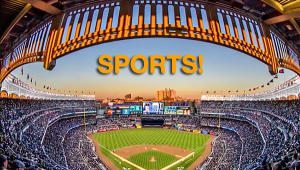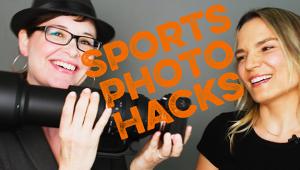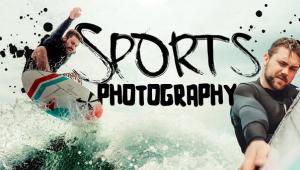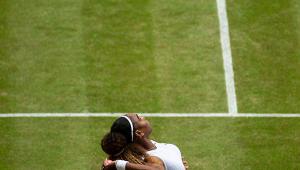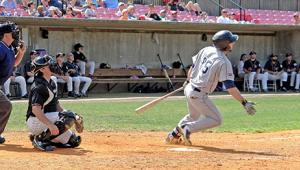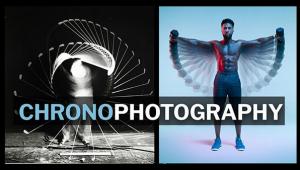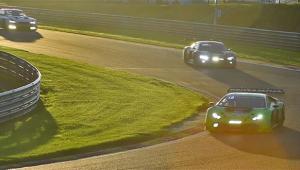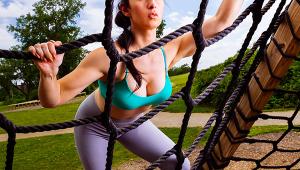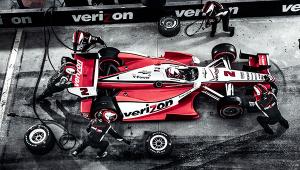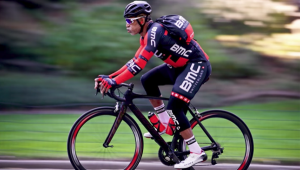4th & Long: How I Beat Bad Field Position to Score Winning Shots of the Broncos’ Victory Parade

All Photos © Blaine Harrington
In less than 12 hours, I went from all access to no access.
On Monday evening, February 8th, I got an e-mail okaying my request for press credentials to cover the Denver Broncos’ Super Bowl victory parade. It was triple good news: I’m a Broncos fan, I’d get images for stock, and I wouldn’t have to travel far (I live about 10 miles from Denver).
But when I woke up, there was an e-mail saying, in effect, “Sorry, our mistake, no credentials for you.”
I didn’t spend a lot of time wondering why I had gone from up (on the platform with the press photographers) to down (in the crowd with everyone else). I was going to the parade, and I was determined to get pictures.


Position Is Everything
We left early for the noon start—“we” being myself, my wife, Maureen, and my daughter, Lauren. I’d figure out what to do once I got there.
The event’s plans called for the line of fire engines carrying the Bronco players to make its way through the skyscraper landscape of downtown Denver to Civic Center Park, where the players, plus team and city officials, would address the crowd. A million people were expected to be along the route and at the park.
We got to the State Capitol Building, which the parade would pass, at about nine o’clock. My idea was that the Capitol would be a better location than the park—the parade would come to us, and there’d definitely be fewer people than at the park.
I walked around a bit, went up a little hill, and scoped out the area. I talked to a police officer and found out a nearby street would be closed off in an area that was getting a lot of sun. We chose a spot near where the street barrier would be. It was a warm day, and the sky was a beautiful, intense blue. Great—there’d be an orange-clothed crowd against a deep blue sky. Lots of sunlight, and, as it turned out, no street barrier placed in front of me, so I’d have a little room to maneuver. This was as good as it was going to get.


What Would Peyton Do?
We waited as noon approached and the crowd grew thicker. I had my usual gear: two cameras around my neck and two additional lenses in my photo vest. The lenses were three zooms (14-24mm, 24-70mm, and 70-200mm) and a 16mm fisheye. I wore Bronco colors—orange and blue—but with the two cameras and the photo vest I didn’t look like an average fan. I didn’t know it at the time, but that would help out a little later on.
As I waited for the parade to start, I started thinking about Peyton Manning. There wasn’t much mobility to his game anymore, so he had to stay in the pocket and rely on reading the defense. I didn’t have much mobility, so I’d have to rely on reading the crowd and reacting with maximum versatility. Manning had experience and cunning. So did I. Okay, I wouldn’t be able to roll out or scramble; I was stuck in the pocket, but I’d shot a lot of events, parades, and festivals and I knew how to keep an offense moving.
I’d zoom those zoom lenses. I’d quickly switch to the 16mm at the right time. I’d get people waving. I’d frame shots of the right-hand side of the crowd and exclude the left. Then I’d switch, and then I’d go wide to get both sides. I knew how to play this slices-of-the-street, inclusion-exclusion game. I knew which receiver was covered and which one would be open.
I snapped out of my Manning reverie just in time. There he was, on the first fire engine, waving to the crowd. Not excited, not exuberant, just…well, totally professional, with a job-well-done expression on his face.


Also on the first engine were running back C.J. Anderson and Annabel Bowlen, wife of Broncos’ owner Pat Bowlen, holding the Lombardi trophy. Soon came Super Bowl MVP, outside linebacker Von Miller.
I shot as one fire engine followed another until the 20 or so that comprised the parade had passed. And then my pro-shooter look helped me out as a cooperative police officer let me leave the sideline and walk into the street to get crowd shots of the Bronco fans and superfans, walking in the direction the parade went.
The parade had taken an hour to pass, but the time seemed to fly by, feeling more like 10 minutes. Basic gear, no flash, no filters, just frame and focus, follow the action, vary the shots. With so much going on, you go with your instincts and experience. You’ve been here before, you know this game, and everything kicks in.
Kind of like Peyton Manning, right?
A selection of Blaine Harrington’s images, including additional Bronco parade photographs, can be viewed at his website, blaineharrington.com.
- Log in or register to post comments

